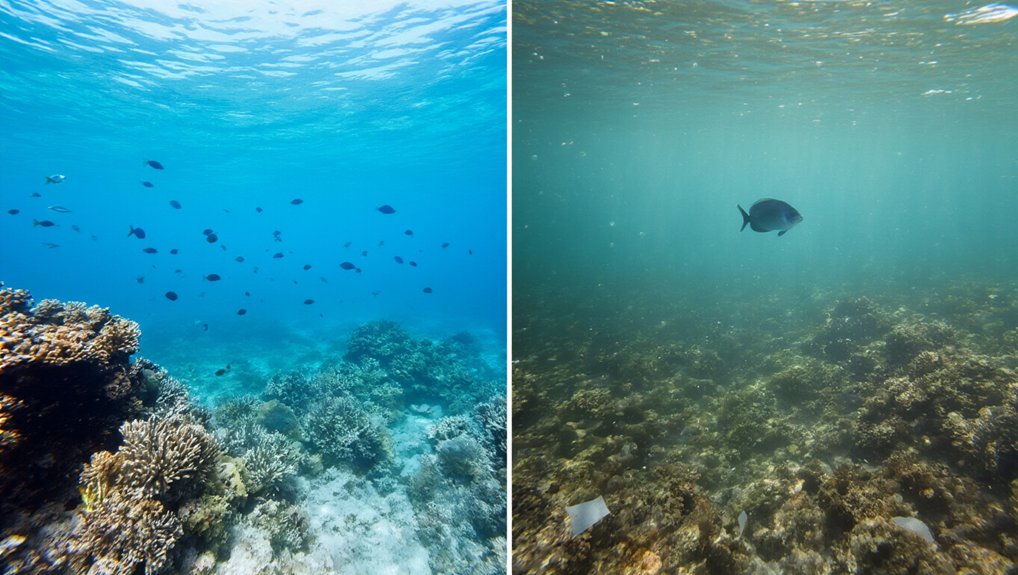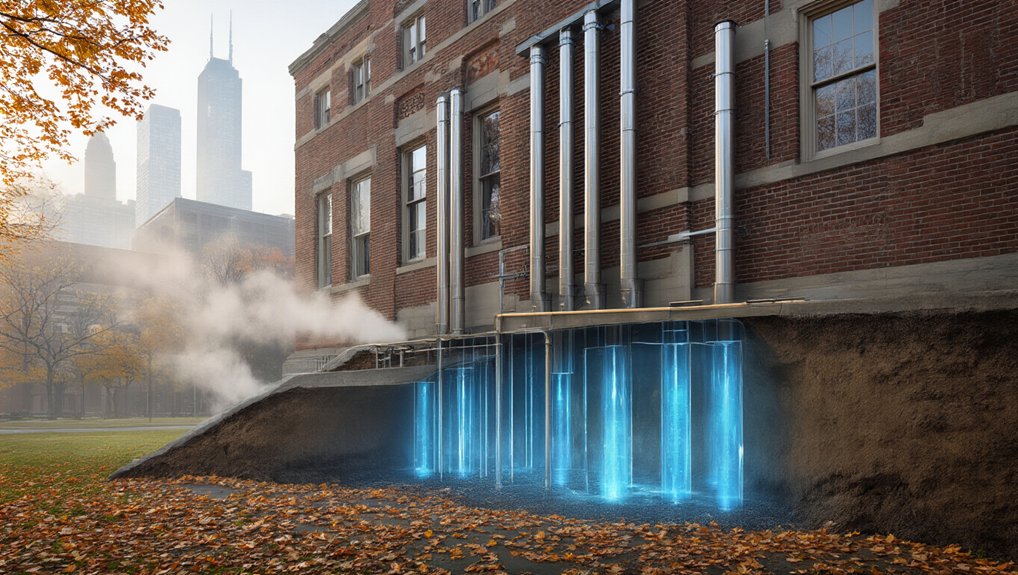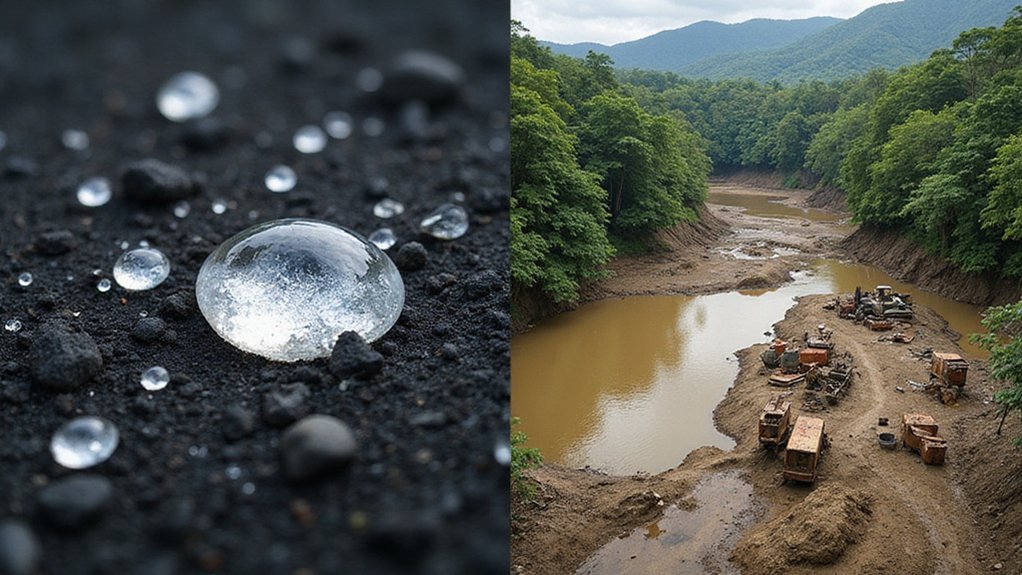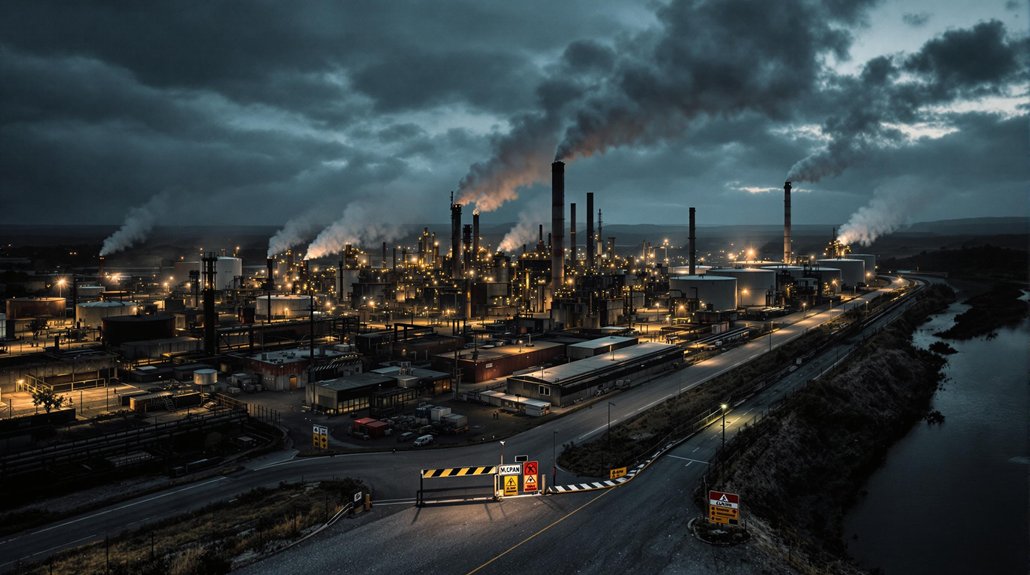While most people worry about visible plastic pollution like bottles and bags cluttering beaches, an invisible threat lurks beneath the waves. Scientists have discovered that nanoplastics—particles smaller than 1 micron—are dominating the Atlantic Ocean‘s plastic crisis. These tiny terrors, often overlooked and underestimated, are everywhere. Not just at the surface, but throughout the entire water column.
The numbers are staggering. Recent studies estimate the Atlantic Ocean alone contains about 11.6-21.1 million tons of these minuscule plastic particles. And that’s just the common polymers. The total plastic load? A whopping 200 million tons. Ten times what we previously thought. Great job, humanity.
A staggering 200 million tons of plastic chokes the Atlantic—ten times worse than we thought. Humanity’s finest achievement.
These nanoplastics form what researchers call a “light smog” in our oceans. They’re in coastal waters. They’re in remote areas. They’ve even reached Antarctica and the Himalayas. Nowhere is safe.
Where do they come from? Mostly land-based sources. Our laundry machines washing synthetic clothes. Cosmetics. Tire wear from roads. Industrial waste. The plastics don’t quickly degrade in the ocean—they arrive pre-fragmented from our activities.
The really concerning part? Traditional sampling methods miss most of these particles. Using finer mesh sizes captures ten times more microplastics than standard methods. The National Oceanography Centre’s research detected up to 7,000 plastic particles per cubic meter of seawater. We’ve been measuring wrong all along.
Size matters when it comes to harm. Smaller particles mean greater toxicity. Nanoplastics can penetrate biological barriers in marine organisms, threatening entire food webs. They’re loaded with toxic additives and absorb other pollutants like a sponge.
Meanwhile, recycling rates remain pathetically low. The crisis is worsening, especially since 2005. Our mitigation efforts aren’t keeping pace.
These invisible particles might seem insignificant compared to floating garbage patches. They’re not. They’re potentially more dangerous precisely because we can’t see them. Research has shown that copepods and krill consume these particles, mistaking them for food and introducing toxins to the base of the marine food chain. The ocean isn’t just collecting our trash—it’s becoming our trash. An entire ecosystem drowning in a soup of plastic particles too small to see but too numerous to ignore.
References
- https://www.weforum.org/stories/2020/08/atlantic-ocean-plastic-pollution-study/
- https://www.earth.com/news/ocean-plastic-crisis-goes-way-deeper-than-we-thought/
- https://www.coastalwiki.org/wiki/Plastics_in_the_ocean
- https://journals.plos.org/plosone/article?id=10.1371/journal.pone.0281596
- https://blog.cleanhub.com/how-much-plastic-in-the-ocean









